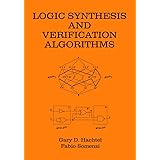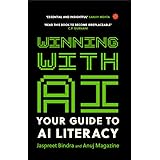If you ask what is Artificial Intelligence, or AI, it is one of the most talked about technologies today. From chatbots and voice assistants to self-driving cars and smart healthcare, AI is changing the way we live and work. But what exactly is artificial intelligence, how does it work, and why is everyone talking about it?
In this guide, we’ll explain what is AI in simple language, explore its history, types, applications, benefits, risks, and its future.
What is Artificial Intelligence?
Artificial Intelligence (AI) is the ability of machines or computer systems to perform tasks that normally require human intelligence. These tasks include learning from experience, reasoning, problem-solving, understanding language, recognizing images, and even making decisions.
In simple words, AI is about teaching machines to think and act smart, just like humans.
A basic example of What is Artificial Intelligence , Google Maps predicting the fastest route by analyzing live traffic, or Siri/Alexa understanding your voice commands and giving answers.
What Defines AI?
What defines AI is its ability to replicate human-like thinking and problem-solving. AI is not defined by the hardware or software itself, but by what it can do—learn from data, adapt to new situations, and make decisions. This combination of learning, reasoning, and adaptation is what separates AI from traditional computer programs.
Short History of Artificial Intelligence
AI might sound like a new concept, but it has been in development for decades:
- 1950s – Alan Turing introduced the idea of machines “thinking” and created the Turing Test.
- 1956 – The term Artificial Intelligence was officially coined at a conference at Dartmouth College.
- 1960s–1980s – AI research grew but faced many challenges due to lack of computing power.
- 1997 – IBM’s Deep Blue defeated chess champion Garry Kasparov.
- 2011 – IBM Watson won the quiz show Jeopardy! against human champions.
- 2018–2023 – AI became mainstream with Google Translate, Siri, Alexa, self-driving cars, and ChatGPT.
- 2024–2025 – Generative AI tools like ChatGPT, Google Gemini, and Claude are now widely used by students, businesses, and individuals worldwide.
Types of Artificial Intelligence
AI can be divided into categories based on its capabilities and functions:
1. Based on Capabilities
- Narrow AI (Weak AI): Designed for a specific task. Example: Google Translate, ChatGPT.
- General AI: A system that can perform any intellectual task like a human. Still a dream for the future.
- Super AI: Hypothetical AI that surpasses human intelligence. Mostly found in science fiction.
2. Based on Functionality
- Reactive Machines: Respond to situations but don’t learn. Example: Chess-playing computer.
- Limited Memory AI: Learns from past data. Example: Self-driving cars.
- Theory of Mind AI: Future AI that can understand emotions. Still under research.
- Self-Aware AI: AI with its own consciousness. Does not exist yet.
How Does AI Work?
AI works by combining data, algorithms, and computing power.
- Data Collection: AI needs huge amounts of data (text, images, videos, voice).
- Training: Machine Learning models analyze patterns from the data.
- Decision Making: AI uses these patterns to predict or generate outputs.
- Improvement: With more data, AI keeps learning and improving.
For example, when you use Google Photos, AI identifies faces by learning from thousands of images.
Applications of AI in Daily Life
AI is everywhere, often without us realizing it:
- Smartphones: Face unlock, voice assistants, autocorrect.
- Social Media: Content recommendations on YouTube, Instagram, and Facebook.
- E-commerce: Personalized product suggestions on Amazon or Flipkart.
- Healthcare: AI helps doctors detect diseases like cancer early.
- Banking: Fraud detection and chatbots for customer service.
- Education: AI tutors, plagiarism detection, and personalized learning apps.
- Entertainment: Netflix, Spotify, and gaming experiences powered by AI.
AI in India
AI adoption is growing fast in India:
- Agriculture: AI predicts crop health, weather, and soil quality.
- Healthcare: AI is being used for affordable diagnosis in rural areas.
- Government Projects: India’s National AI Strategy focuses on education, healthcare, and smart cities.
- Startups: Many Indian startups are building AI tools for businesses, students, and farmers.
According to reports, AI could add siginificant revenues to India’s economy in coming years.
Benefits of Artificial Intelligence
AI comes with many advantages:
- Saves time and improves efficiency.
- Reduces human errors.
- Works 24/7 without breaks.
- Helps in data analysis and decision-making.
- Improves customer experiences with personalization.
Challenges and Risks of AI
Along with benefits, AI also brings challenges:
- Job Losses: Some jobs may be replaced by automation.
- Bias in AI: If the training data is biased, AI may give unfair results.
- Privacy Issues: AI systems collect a lot of personal data.
- Over-dependence: Relying too much on AI may reduce human creativity.
- Ethical Concerns: Questions about control and misuse of AI.
What is Open Artificial Intelligence?
Open Artificial Intelligence often refers to AI systems that are open-source and accessible to everyone. It also connects to OpenAI, the company that developed ChatGPT and other popular AI models. Open AI tools and frameworks allow students, researchers, and businesses to experiment with AI without needing massive budgets. This openness helps speed up innovation and makes AI more inclusive.
Future of Artificial Intelligence
The future of AI looks exciting but also challenging. Here are some predictions:
- AI will continue to improve healthcare, making early diagnosis easier.
- More businesses will use AI for automation and decision-making.
- Education will become more personalized with AI tutors.
- AI ethics and regulations will become more important.
- India and other developing countries will use AI for agriculture and public services.
Some experts believe AI will create new job opportunities while transforming old ones, just like the Industrial Revolution.
Frequently Asked Questions (FAQ)
Q1. What is Artificial Intelligence in simple words?
AI means teaching machines to think and act smart like humans.
Q2. Is AI dangerous?
AI itself is not dangerous, but misuse can be. That’s why rules and ethical practices are important.
Q3. Will AI take away jobs?
Some routine jobs may be replaced, but AI will also create new types of jobs.
Q4. What is the difference between AI and Machine Learning?
AI is the broader concept of making machines smart, while Machine Learning is a method to achieve AI using data and algorithms.
Q5. Can I use AI for free?
Yes, many AI tools like ChatGPT (free version), Google Bard, and Canva AI offer free access.
6. What is open artificial intelligence?
It usually refers to open-source AI frameworks and the work of OpenAI, which makes advanced AI models available for public use.
7. What defines AI?
AI is defined by its ability to learn, reason, and adapt, not by the machine itself.
Final Thoughts
Now you know what is artificial intelligence and how it impacts our world. AI is not just a buzzword; it’s a real technology shaping the future. From helping students with studies to transforming healthcare and business, AI is becoming part of everyday life.
For general readers, the most important takeaway is this: AI is a tool. If used wisely, it can make life easier and better. The key is to stay informed and learn how to use it responsibly.
Also read : Best Free AI Tools for Digital Marketing Beginners ( 2025 Guide)




